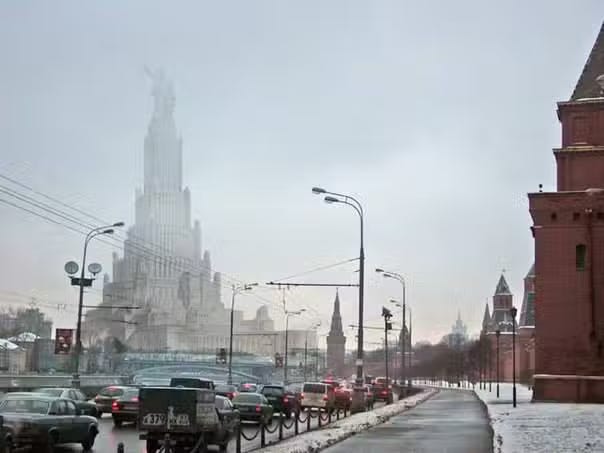Everything is huge right now. Handbags, marketing, hats, assholes, assholes in hats, JD Vance’s face.







But why now? Why is contemporary culture preoccupied with oversized things?
Part of the answer must lie in the emotional and political climate. In times of instability — ecological, existential, social — cultures tend to turn toward exaggeration. Scale becomes symbolic. As the spectre of autocracy re-emerges, oversized formats are being deployed to dominate space, shape perception, and command attention.
This isn’t new.
In ancient Rome and Egypt, monumentality made rulers seem like gods, which overwhelmed people into submission.
In totalitarian regimes of the 20th Century, gigantism was an expression of authoritarian permanence that, like ancient times, also happened be geared to psychological and social domination. Nazi architecture, Soviet statuary, Mao’s parades. Bigness reads as truth. Bigness didn’t just impress, it suppressed.
Palace of the Soviets
In post-war capitalist spectacle, scale shifted from domination to distraction and became a symbol of capital. At this time I think we thought less about ideological conformity and more about attention capture, but of course that is just another form of social control. Las Vegas, skyscrapers, Balloon Dog.
One of Koons’ Balloon Dogs at a 2008 exhibition at Versailles. Photo by Marc Wathieu
Now, in contemporary digital and pop culture, scale seems to have something to do with experience economies and fantasies of immersion. teamLab, the Sphere, the metaverse. And maybe as more of life is mediated through screens and simulations, viewers crave the visceral, and bigness reads as physicality.
teamLab Borderless, MORI building, Digital Art Museum 2024
The Sphere, Las Vegas
So now, what is the function of scale in the age of generative AI?
It’s harder to pin down because all of those prior logics are rushing back at the same time:
Authoritarian aesthetics
Atmospheric rivers of reality-bending attention-fed slop
Digital spectacle still inflating
And then information itself is ballooning beyond comprehension as we try to decipher the sublime new giants among us: Large Language Models, ever-more extravagant context windows, petaflops of compute, husky perameters, jumbo datasets, the idea of intelligence and cognition that is not only already incomprehensibly larger than us, but will continue to grow.
Maybe that’s part of why AI feels both awe-inspiring and terrifying. Like the pyramids, these systems dwarf us. Like fascism and fascism’s spectacles, they can bend perception, making up feel like down, real feel fake.
So is this why people are taking the bait of fascism at the same time they are baseline scared of AI?
Are we already primed by the psychological effects of scale, and already scared by the magnitude of what we don’t understand because we are not just living with bigness, we are being shaped by it? If people aren’t turning to scale because of authoritarianism, maybe scale becomes emotionally legible now because of fear, instability, and overwhelm. Maybe it offers an illusion of certainty, of presence, of power, and in that environment, authoritarianism finds fertile ground?








This is brilliant! I would love to share this with my high school students.